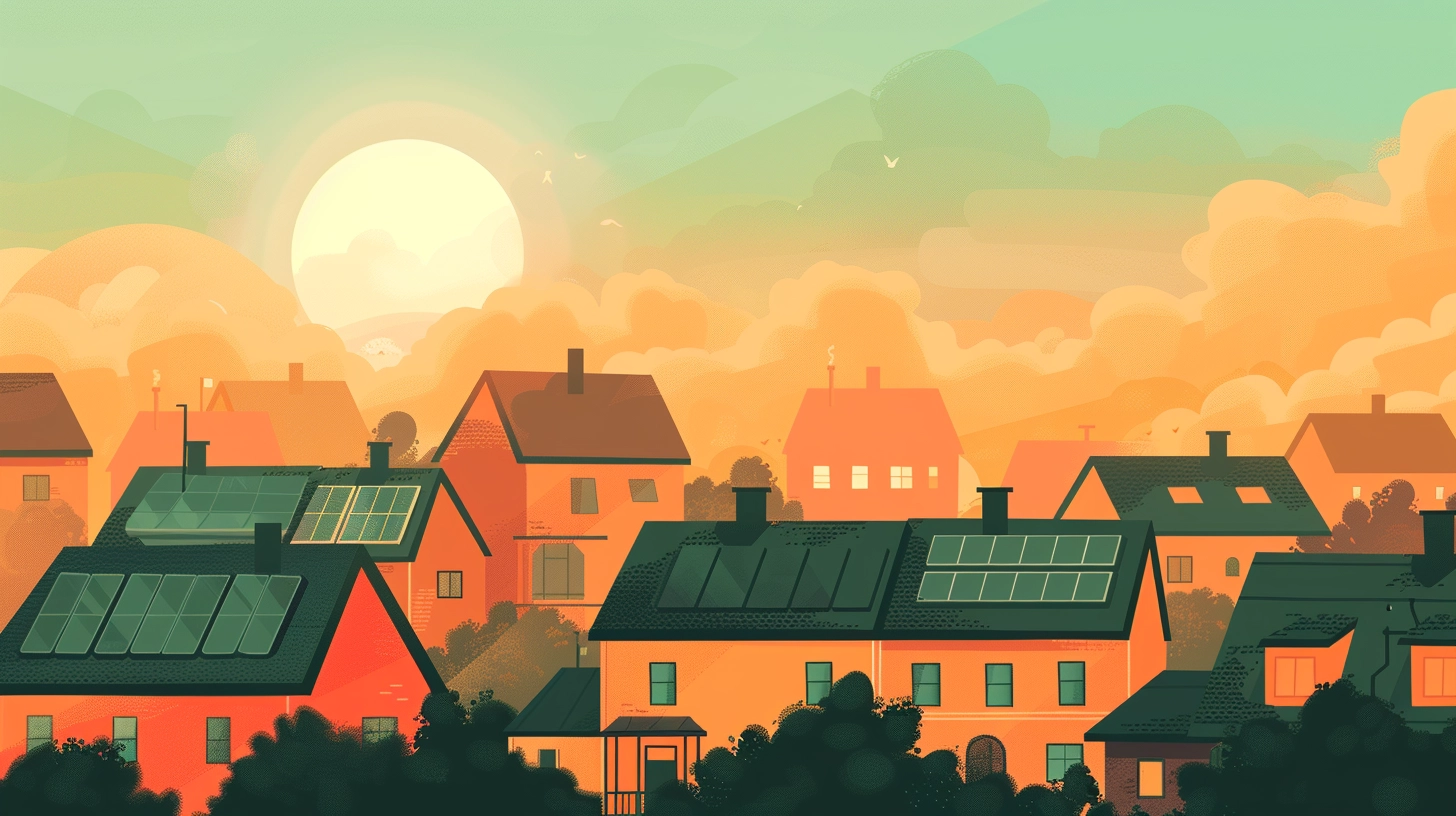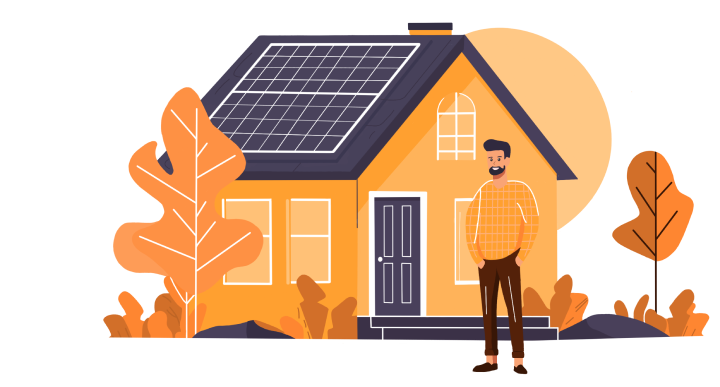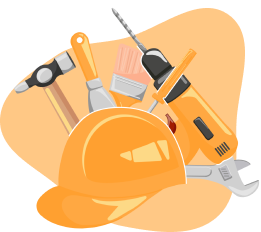Solar power installations are becoming increasingly popular among homeowners looking to reduce their energy bills and carbon footprint. As awareness of sustainability grows, more people are seeking clear, actionable information about solar installation.
In this guide, we'll break down everything you need to know, from assessing your solar potential to choosing the right residential solar panels and finding reliable installers.
#1: Solar panels harness the power of the sun.
Solar power installations involve setting up solar panels on your roof or property to capture sunlight and convert it into electricity for your home.
In this way, solar panels serve as a reliable source of renewable energy. When installing solar panels, the key components include the panels themselves, inverters that convert the solar power into usable electricity and mounting systems that secure the panels to your roof or property.
Solar energy solutions make your home more energy-efficient and reduce reliance on non-renewable energy sources.
Types of solar installations
Grid-tied solar panel systems connect to your local utility grid, allowing you to draw power when your solar energy is insufficient. This setup is typically more affordable and easier to install, making it popular among homeowners in urban or suburban areas.
Conversely, off-grid systems rely solely on solar power and often require battery storage to ensure a continuous power supply. These are ideal for remote locations or those who want complete independence from the utility grid.
These differences are good to note if you're comparing solar panel efficiency. Depending on your specific energy goals, location and budget, one of these options will be more suitable for meeting your needs.
#2: The solar power installation process takes a few simple steps.
Step #1: Conduct a site assessment to determine your home's solar potential.
A professional site assessment involves analyzing your roof's angle, sunlight exposure and any potential obstructions like trees or buildings. These factors play a crucial role in determining whether your home can effectively harness solar energy and, if so, what the optimal placement and size of solar installations should be.
Step #2: Choose the right solar panels and equipment for your installation.
Once the site assessment is complete, you'll need to choose the right equipment. Solar panels come in different types, such as monocrystalline and polycrystalline, each with varying efficiency levels and solar power systems costs. For example, monocrystalline panels are typically more efficient but also more expensive.
Choosing high-quality panels and equipment is essential for the longevity and performance of your solar power installations.
Step #3: Obtain necessary permits and approvals before installation.
Before figuring out how to install solar panels, you'll need to secure the appropriate permits from your local authorities.
This includes electrical and building permits, along with approvals from homeowner associations if applicable. Professional installers usually handle these requirements on your behalf to streamline the process.
Step #4: A professional will install the solar power system and connect it to your home's electrical grid.
To install a solar panel, the provider first ensures they are securely mounted, often with specialized brackets that adjust to the angles of your roof. Next, the panels are wired to your home's electrical system and an inverter is installed to convert the solar power into usable electricity. For grid-tied systems, this includes connecting to the local utility grid.
#3: Solar power can provide long-term savings.
Solar power installations involve several cost components. The initial cost of solar panel installation is influenced by the size of the system you choose, the quality of equipment and the complexity of the installation.
Solar panels themselves can range widely in price based on their efficiency and brand, while inverters and mounting systems add to the upfront costs. Labor costs also vary. To get a clear picture of what you'll need to spend, it's essential to gather detailed quotes from multiple installers.
Many homeowners can benefit from federal and state incentives, such as tax credits and rebates. The Federal Investment Tax Credit, for example, can cover a significant portion of the solar power systems cost. States may also provide grants, rebates or additional tax credits.
Long-term savings
While the initial cost of solar power installations may seem high, homeowners typically recoup their solar installation cost investment within five to ten years through energy savings.
Over time, the savings on your electricity bills can offset the initial investment, especially as utility rates continue to rise. Additionally, many solar systems last several decades, which means reduced energy costs well after the system has paid for itself.
#4: Solar Energy Host can help you find the right installer for your solar panels.
Choosing a reliable installer is key to successful solar power installations and Solar Energy Host simplifies the process by providing multiple quotes from local providers, allowing you to compare offers.
Just enter some basic information, such as your location and energy needs, and our platform can help you evaluate pricing, service details and installer reputations side-by-side.
Frequently Asked Questions (FAQ)
How can I find out if my area gets enough sunlight for solar power?
Wondering how to calculate solar panel energy output? To determine if your area gets enough sunlight for solar power installations, you can use online solar calculators.
These tools estimate the solar potential of your location based on geographic data like latitude, average sunlight hours and weather conditions. For a more accurate assessment, a professional solar installer can perform a site evaluation.
Does solar panel efficiency degrade over time?
Yes, solar panel efficiency does degrade over time, but the degradation is usually slow and minimal.
Most solar panels experience efficiency loss at a rate of about 0.5% per year. Even after 25 years, most panels are still capable of producing around 80% to 90% of their original output. High-quality panels often come with performance warranties that guarantee a certain efficiency level after a specified period, which can give you peace of mind about long-term performance.
The gradual efficiency loss is minimal enough that solar panels remain a viable investment over decades. However, it might be best to consult your provider for your solar panel maintenance options to maximize efficiency for years to come.
How can I get a solar power system that fits my specific energy needs?
To get a solar power system that fits your energy needs, start by reviewing your household's energy consumption over the past year.
This will help you calculate the system size required to offset your electricity use. A professional installer can then assess your roof space, sunlight exposure and energy goals to design a custom system tailored to your home.
Welcome to Solar Energy Host
Go green with Solar Energy Host. Our straightforward and secure platform connects you with top local solar installers to ensure you receive the most competitive quotes for solar panel installation.
Join countless homeowners who have switched to a sustainable future and enjoy serious savings with Solar Energy Host.














